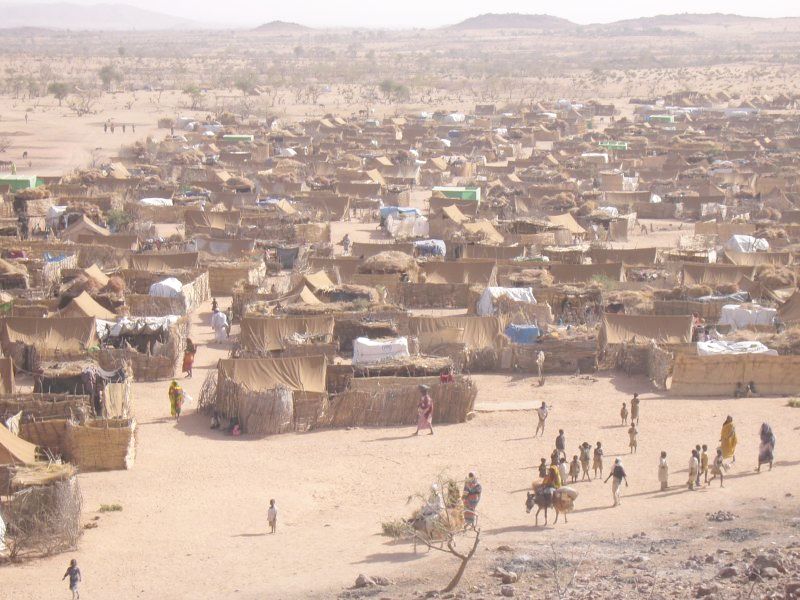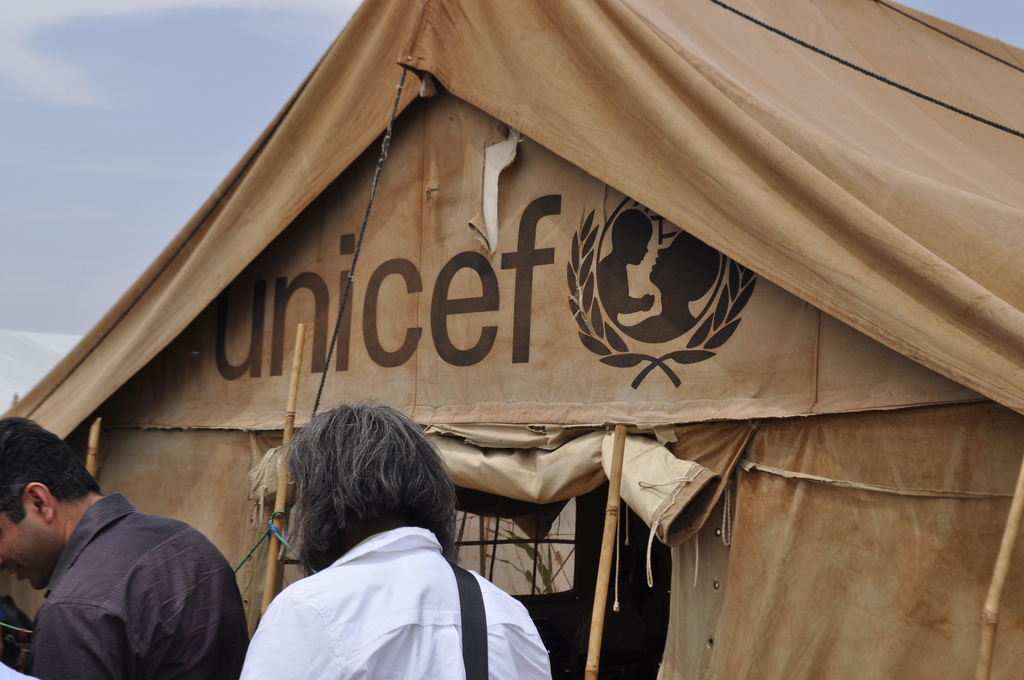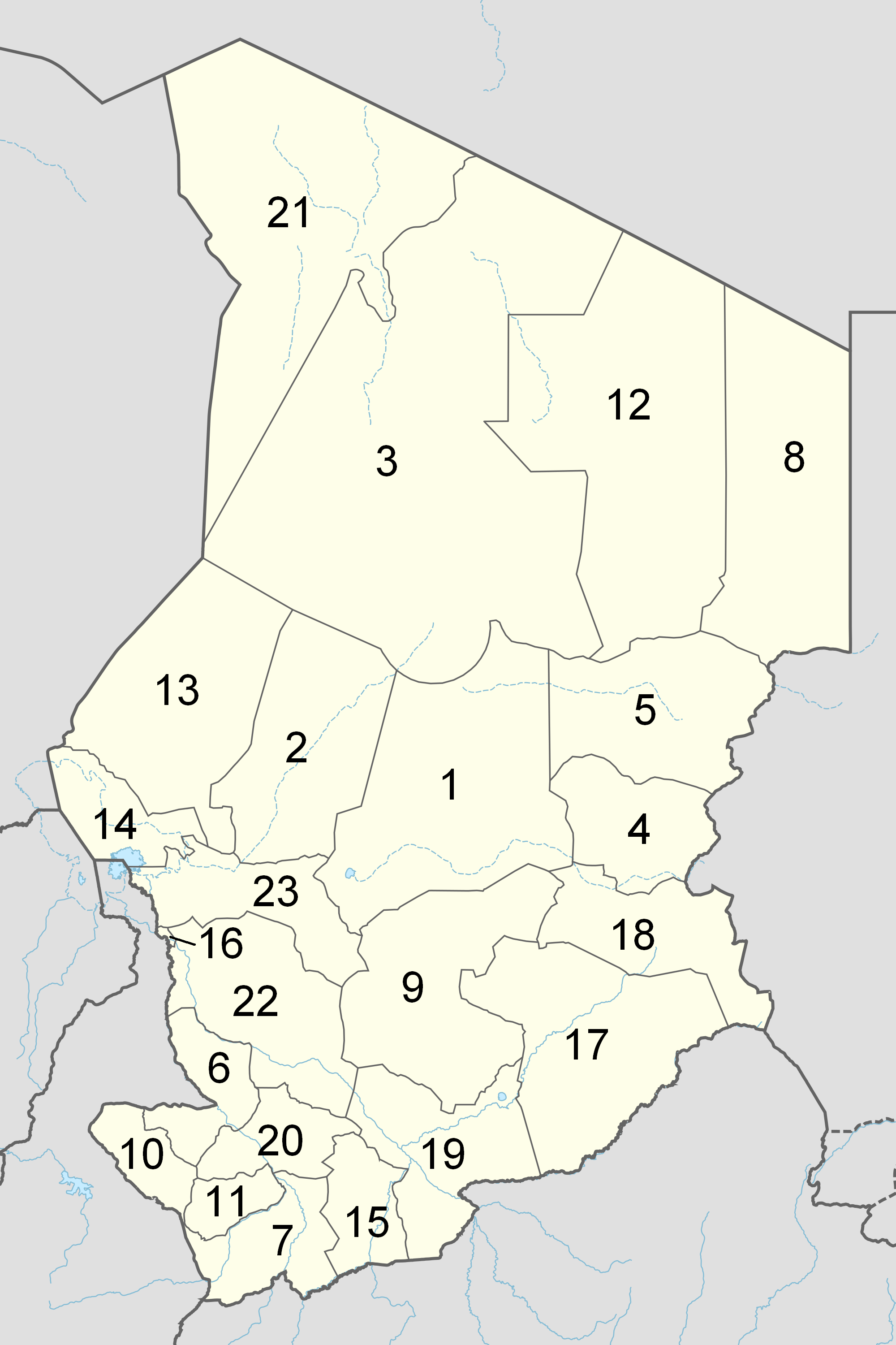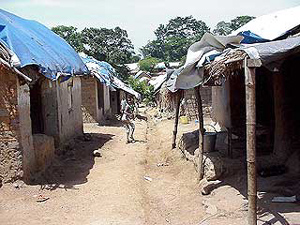|
Goré, Chad
Goré () is a town and the capital of the La Nya Pendé in Chad's Logone Oriental Region. Near Goré, the refugee camps of Amboko, Gondjé, and Dosseye along the Pendé River have been home to refugees from the Central African Republic. As of 2009, "in and around Gore, over 15,000 children ... erecurrently enrolled in the more than 25 schools supported by UNICEF. This includes more than 6,000 refugee pupils. UN agricultural programs are helping the refugees move towards food self sufficiency. In April 2014, Chadian troops escorting a convoy of "the last 540 Muslim residents" of Bossangoa, Central African Republic to Goré, Chad were attacked by local militia as they passed through Boguila. Three people were wounded. The town is home to a UNHCR office and a hospital. Climate The city has a Tropical savanna climate Tropical savanna climate or tropical wet and dry climate is a tropical climate sub-type that corresponds to the Köppen climate classification categories ''Aw'' ... [...More Info...] [...Related Items...] OR: [Wikipedia] [Google] [Baidu] |
List Of Sovereign States
The following is a list providing an overview of sovereign states around the world with information on their status and recognition of their sovereignty. The 205 listed states can be divided into three categories based on membership within the United Nations System: 193 member states of the United Nations, UN member states, two United Nations General Assembly observers#Current non-member observers, UN General Assembly non-member observer states, and ten other states. The ''sovereignty dispute'' column indicates states having undisputed sovereignty (188 states, of which there are 187 UN member states and one UN General Assembly non-member observer state), states having disputed sovereignty (15 states, of which there are six UN member states, one UN General Assembly non-member observer state, and eight de facto states), and states having a political status of the Cook Islands and Niue, special political status (two states, both in associated state, free association with New ... [...More Info...] [...Related Items...] OR: [Wikipedia] [Google] [Baidu] |
Refugees
A refugee, according to the United Nations High Commissioner for Refugees (UNHCR), is a person "forced to flee their own country and seek safety in another country. They are unable to return to their own country because of feared persecution as a result of who they are, what they believe in or say, or because of armed conflict, violence or serious public disorder." Such a person may be called an asylum seeker until granted refugee status by a contracting state or by the UNHCR if they formally make a claim for asylum. Internally Displaced People (IDPs) are often called refugees, but they are distinguished from refugees because they have not crossed an international border, although their reasons for leaving their home may be the same as those of refugees. Etymology and usage In English, the term ''refugee'' derives from the root word ''refuge'', from Old French ''refuge'', meaning "hiding place". It refers to "shelter or protection from danger or distress", from Latin ''fu ... [...More Info...] [...Related Items...] OR: [Wikipedia] [Google] [Baidu] |
Tropical Savanna Climate
Tropical savanna climate or tropical wet and dry climate is a tropical climate sub-type that corresponds to the Köppen climate classification categories ''Aw'' (for a dry "winter") and ''As'' (for a dry "summer"). The driest month has less than of precipitation and also less than 100-\left (\frac \right)mm of precipitation. This latter fact is in a direct contrast to a tropical monsoon climate, whose driest month sees less than of precipitation but has ''more'' than 100-\left (\frac \right) of precipitation. In essence, a tropical savanna climate tends to either see less overall rainfall than a tropical monsoon climate or have more pronounced dry season(s). It is impossible for a tropical savanna climate to have more than as such would result in a negative value in that equation. In tropical savanna climates, the dry season can become severe, and often drought conditions prevail during the course of the year. Tropical savanna climates often feature tree-studded grasslands due ... [...More Info...] [...Related Items...] OR: [Wikipedia] [Google] [Baidu] |
United Nations High Commissioner For Refugees
The Office of the United Nations High Commissioner for Refugees (UNHCR) is a United Nations agency mandated to aid and protect refugees, forcibly displaced communities, and stateless people, and to assist in their voluntary repatriation, local integration or resettlement to a third country. It is headquartered in Geneva, Switzerland, and has 20,305 staff working in 136 countries as of December 2023. Background The office of High Commissioner for Refugees has existed since 1921, when it was created by the League of Nations with Norwegian scientist Fridtjof Nansen as its first occupant. The International Refugee Organization (IRO) was created in 1946 to address the refugee crisis that resulted from World War II. The United Nations established the Office of the United Nations High Commissioner for Refugees in 1950 as the successor of the IRO. The 1951 Refugee Convention established the scope and legal framework of the agency's work, which initially focused on Europeans ... [...More Info...] [...Related Items...] OR: [Wikipedia] [Google] [Baidu] |
Boguila
Boguila is a village located in the Central African Republic prefecture of Ouham-Pendé. It should not be confused with the town of Boguila in Ouham prefecture. According to Medecins Sans Frontieres, Since the coup d’état in March 2013, Boguila has been unstable with increasing tensions and violence. In August 2013, a peak of violence provoked a massive population displacement in the area. In December 2013, Muslims fleeing violence from Nana Bakassa sought refuge with host families in Boguila before moving further north. Between January and October 2013, approximately 95,000 people in the areas surrounding the town received treatment for malaria. On April 11, 2014, "nearly 7000 people fled to the bush after fighting erupted in Boguila." Chadian troops were escorting a convoy of "the last 540 Muslim residents of the northwestern town of Bossangoa to Goré, Chad," and were attacked by local militia as they passed through Boguila. On April 28, 2014, Medecins Sans Frontieres a ... [...More Info...] [...Related Items...] OR: [Wikipedia] [Google] [Baidu] |
Bossangoa
Bossangoa is the capital of Ouham, one of the 14 Prefectures of the Central African Republic, prefectures of the Central African Republic. The town has a population of 36,478 (2003 census). It is located 303 km (189 mi) north of the country's capital, Bangui. The Ouham River passes through Bossangoa and on through a number of waterfalls east of the city before turning north to join the Chari River in Chad. The Mandjia, the third most populous ethnic group in the Central African Republic, are concentrated in Bossangoa. Along with the Gbaya people, Baya, a closely related group, the Mandjia are important historically for their resistance to invasion by various Muslim powers to the north. History From 1901 to 1905 Bossangoa and the surrounding area was in rebellion against French colonial authorities. Bossangoa became a center of Protestant missionary activity during the 1920s. In 1959, the city was made the seat of the Apostolic Prefecture of Bossangoa from the Diocese ... [...More Info...] [...Related Items...] OR: [Wikipedia] [Google] [Baidu] |
Military Of Chad
The Chadian National Army (; , ANT) consists of the five Defence and Security Forces listed in Article 185 of the Chadian constitution of 2018, Chadian Constitution that came into effect on 4 May 2018. These are the National Army (including Chadian Ground Forces, Ground Forces and Chadian Air Force, Air Force), the Chadian national gendarmerie, National Gendarmerie, the National Police, the National and Nomadic Guard (GNNT), and the Judicial Police. Article 188 of the Constitution specifies that National Defence is the responsibility of the Army, Gendarmerie and GNNT, whilst the maintenance of public order and security is the responsibility of the Police, Gendarmerie and GNNT. There is also the General Directorate of the Security Services of State Institutions (DGSSIE), with the functions of presidential security, military intelligence, and counterterrorism; it answers directly to the president of Chad. As of 2024, there were an estimated 27,500 soldiers in the Ground Forces, 350 ... [...More Info...] [...Related Items...] OR: [Wikipedia] [Google] [Baidu] |
UNICEF
UNICEF ( ), originally the United Nations International Children's Emergency Fund, officially United Nations Children's Fund since 1953, is an agency of the United Nations responsible for providing Humanitarianism, humanitarian and Development aid, developmental aid to children worldwide. The organization is one of the most widely known and visible social welfare entities globally, operating in 192 countries and territories. UNICEF's activities include providing immunizations and disease prevention, administering Antiretroviral drug, treatment for children and mothers with HIV, enhancing childhood and maternal nutrition, improving sanitation, promoting education, and providing emergency relief in response to disasters. UNICEF is the successor of the United Nations International Children's Emergency Fund, and was created on 11 December 1946, in New York, by the United Nations Relief and Rehabilitation Administration, U.N. Relief Rehabilitation Administration to provide immediate r ... [...More Info...] [...Related Items...] OR: [Wikipedia] [Google] [Baidu] |
Central African Republic
The Central African Republic (CAR) is a landlocked country in Central Africa. It is bordered by Chad to Central African Republic–Chad border, the north, Sudan to Central African Republic–Sudan border, the northeast, South Sudan to Central African Republic–South Sudan border, the east, the Democratic Republic of the Congo to Central African Republic–Democratic Republic of the Congo border, the south, the Republic of the Congo to Central African Republic–Republic of the Congo border, the southwest, and Cameroon to Cameroon–Central African Republic border, the west. Bangui is the country's capital and largest city, bordering the Democratic Republic of the Congo. The Central African Republic covers a land area of about . As of 2024, it has a population of 5,357,744, consisting of about 80 ethnic groups, and is in the scene of a Central African Republic Civil War, civil war, which has been ongoing since 2012. Having been a Ubangi-Shari, French colony under the name Ubangi ... [...More Info...] [...Related Items...] OR: [Wikipedia] [Google] [Baidu] |
Pendé River
The Pendé River () is a river in central Africa. It arises in Ouham-Pendé in the Central African Republic and flows north, forming a short part of the international boundary between the Central African Republic and Chad. It eventually merges with the Logone River near Kim. Historically it gave its name to the French administrative district Pendé, which was ceded to Germany as part of Neukamerun at the treaty of Fez The Treaty of Fes (, ), officially the Treaty Concluded Between France and Morocco on 30 March 1912, for the Organization of the French Protectorate in the Sharifian Empire ( French: ), was signed by Sultan Abd al-Hafid of Morocco under duress a ... 1912. Hydrometry The flow of the river observed over 28 years (1947–75) in Doba, a town in Chad about 70 km above the mouth into the Logon, observed average annual flow at 128 m³ / s fed by an area of about 14.300 km ², a majority of the total catchment area of the river. References {{ ... [...More Info...] [...Related Items...] OR: [Wikipedia] [Google] [Baidu] |
Regions Of Chad
The Chad, Republic of Chad is divided into 23 provinces. Chad was divided into regions in 2002. It was previously divided into prefectures of Chad, prefectures, and then departments of Chad, departments. On , a new ordinance divided Chad into 23 provinces, 107 departments, and 377 communes. The names of the former regions remained the same but were now called . On , a new ordinance further divided the 23 regions into 120 departments and 454 sub-prefectures. Current provinces This is a list of the provinces of Chad (called regions before 2018), with official population figures from the 2009 census, and estimated population figures for mid 2023. History From independence in 1960 until 1999 it was divided into prefectures of Chad, 14 ''préfectures''. These were replaced in 1999 by departments of Chad, 28 ''départements''. The country was reorganized again in 2002 to produce 18 ''régions''. In 2008, a further four ''régions'' were created, increasing the number to 22. En ... [...More Info...] [...Related Items...] OR: [Wikipedia] [Google] [Baidu] |
Refugee Camps
A refugee camp is a temporary settlement built to receive refugees and people in refugee-like situations. Refugee camps usually accommodate displaced people who have fled their home country, but camps are also made for internally displaced people. Usually, refugees seek asylum after they have escaped war in their home countries, but some camps also house environmental and economic migrants. Camps with over a hundred thousand people are common, but as of 2012, the average-sized camp housed around 11,400. They are usually built and run by a government, the United Nations, international organizations (such as the International Committee of the Red Cross), or non-governmental organization. Unofficial refugee camps, such as Idomeni in Greece or the Calais jungle in France, are where refugees are largely left without the support of governments or international organizations. Refugee camps generally develop in an impromptu fashion with the aim of meeting basic human needs fo ... [...More Info...] [...Related Items...] OR: [Wikipedia] [Google] [Baidu] |




